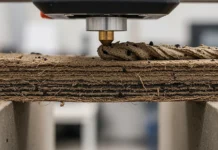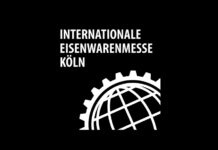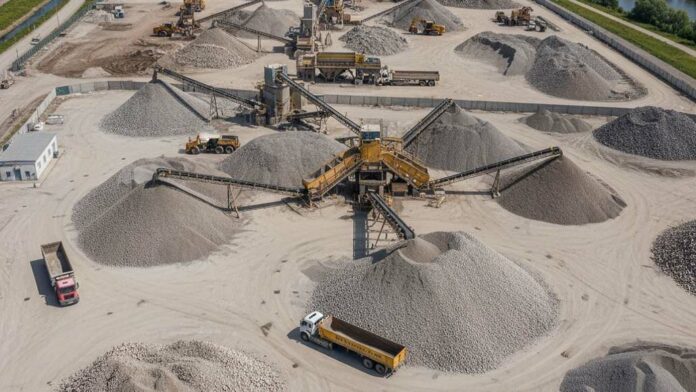The construction industry generates approximately 1.3 billion tons of waste annually, with concrete and masonry materials comprising the largest component of this waste stream. Traditional approaches to construction demolition typically involve transporting massive quantities of concrete debris to landfills, creating significant environmental burdens while simultaneously consuming valuable aggregate resources for new construction projects. However, concrete recycling solutions are revolutionizing this paradigm by transforming waste streams into valuable resources that support circular economy principles while delivering economic and environmental benefits throughout construction lifecycles.
Contemporary concrete recycling technologies have evolved far beyond simple crushing operations to encompass sophisticated processing systems that can separate, clean, and reconstitute demolished concrete into high-quality aggregates suitable for demanding structural applications. These advanced systems address traditional concerns about recycled aggregate quality while providing sustainable alternatives to virgin aggregate extraction that reduce both environmental impact and material costs.
The transformation of construction waste management through concrete recycling represents a fundamental shift toward resource conservation and circular economy implementation that benefits all construction industry stakeholders. From reduced disposal costs and material expenses to enhanced sustainability credentials and regulatory compliance, concrete recycling solutions provide comprehensive value propositions that align economic incentives with environmental objectives.
Advanced Recycled Aggregates Production
Modern recycled aggregate production encompasses sophisticated processing technologies that can produce materials meeting or exceeding the quality standards of virgin aggregates while maintaining cost competitiveness and environmental advantages. Multi-stage crushing systems break down concrete waste into precisely graded aggregate sizes while removing contaminating materials that could compromise performance in new applications.
Density separation technologies utilize differences in specific gravity to remove lightweight contaminants such as wood, plastic, and gypsum that commonly contaminate demolition debris. Advanced optical sorting systems can identify and remove contaminants based on color, shape, and surface characteristics, achieving purity levels that were previously unattainable through mechanical separation alone.
Washing and cleaning systems remove adhered mortar, surface contaminants, and chloride deposits that could affect the performance of recycled aggregates in new concrete applications. High-pressure water jets, abrasion cleaning, and chemical treatment systems can restore aggregate surfaces to conditions approaching virgin material quality.
Quality enhancement technologies including thermal treatment, chemical conditioning, and surface modification can improve recycled aggregate characteristics beyond those achievable through mechanical processing alone. These treatments can enhance aggregate strength, reduce water absorption, and improve bond characteristics with new cement paste systems.
Construction Waste Management Innovation
Comprehensive waste management strategies integrate on-site processing, logistics optimization, and quality control systems to maximize recycling efficiency while minimizing handling costs and environmental impact. Mobile processing equipment enables on-site concrete recycling that eliminates transportation costs while providing immediate access to recycled materials for ongoing construction activities.
Waste stream characterization technologies utilize advanced analysis techniques to identify optimal processing strategies for different types of concrete waste. X-ray fluorescence analysis, petrographic examination, and chemical testing can determine aggregate composition, contamination levels, and processing requirements before materials enter recycling systems.
Segregation and pre-processing systems separate different waste types to optimize processing efficiency and product quality. Automated sorting technologies can distinguish between various concrete types, identify heavily contaminated materials, and direct waste streams to appropriate processing equipment based on their characteristics.
Logistics optimization algorithms coordinate waste collection, processing schedules, and product delivery to minimize transportation costs while maximizing processing facility utilization. These systems can integrate waste availability, processing capacity, and market demand to optimize overall system efficiency.
Circular Economy Implementation Strategies
The implementation of circular economy principles in construction requires systematic approaches that address material flows, quality standards, and market mechanisms throughout construction lifecycles. Closed-loop systems design enables materials to circulate repeatedly through construction, use, demolition, and recycling phases while maintaining performance characteristics and economic value.
Material passport systems track aggregate properties, processing history, and performance characteristics throughout multiple recycling cycles. These digital documentation systems provide transparency about material quality while enabling optimal utilization strategies based on specific performance requirements.
Quality certification programs establish standardized testing protocols and performance criteria for recycled aggregates while providing confidence to specifiers and contractors regarding material suitability for various applications. These programs reduce risk perception while expanding market acceptance of recycled materials.
Economic incentive structures including waste diversion credits, recycled content requirements, and tax advantages can accelerate adoption of concrete recycling solutions by aligning financial benefits with environmental objectives. Market-based mechanisms can internalize environmental costs while providing competitive advantages for sustainable construction practices.
Sustainable Demolition Practices
Selective demolition techniques enable recovery of high-quality concrete materials while minimizing contamination and processing requirements. Advanced cutting technologies, controlled explosions, and systematic deconstruction procedures can separate concrete elements while preserving aggregate quality and reducing processing costs.
Contamination prevention strategies implemented during demolition operations significantly improve recycled aggregate quality while reducing processing complexity. Material segregation, hazardous substance removal, and contamination control procedures ensure that recovered concrete meets quality requirements for recycling applications.
Demolition planning optimization utilizes building information modeling and materials assessment to identify optimal deconstruction sequences that maximize material recovery while minimizing contamination risks. These planning processes can double or triple the quantity of materials suitable for high-value recycling applications.
Equipment optimization for sustainable demolition includes specialized cutting tools, material handling systems, and on-site processing equipment that can recover materials in optimal condition for recycling. Advanced demolition equipment can separate materials cleanly while reducing contamination and processing requirements.
Green Concrete Production Integration
The integration of recycled aggregates into new concrete production requires modification of traditional mix design approaches to accommodate the unique characteristics of processed materials while maintaining or enhancing structural performance. Advanced mix design methodologies can optimize recycled aggregate utilization while achieving targeted strength, durability, and workability characteristics.
Performance enhancement techniques including aggregate treatment, chemical admixtures, and optimized proportioning can improve concrete performance when utilizing recycled aggregates. These approaches can overcome traditional limitations of recycled materials while providing equal or superior performance compared to virgin aggregate concrete.
Quality control systems for recycled aggregate concrete require enhanced testing protocols that verify both aggregate characteristics and final concrete performance. Statistical quality control approaches can ensure consistent performance while identifying optimization opportunities for both materials and processes.
Environmental impact assessment of green concrete production demonstrates significant advantages over traditional approaches through reduced aggregate extraction, minimized waste disposal, and decreased transportation requirements. Lifecycle assessment methodologies quantify these benefits while supporting decision-making and regulatory compliance efforts.
Technology Integration and Automation
Advanced processing technologies integrate artificial intelligence, robotic systems, and automated quality control to optimize recycling operations while minimizing labor requirements and processing costs. Machine learning algorithms can optimize crushing sequences, separation parameters, and quality control procedures based on real-time feedback and performance outcomes.
Sensor technologies including X-ray transmission, near-infrared spectroscopy, and laser-induced breakdown spectroscopy enable real-time monitoring of aggregate quality and contamination levels throughout processing operations. These systems provide immediate feedback that enables process optimization while ensuring product quality consistency.
Automated material handling systems reduce labor costs while improving safety and processing efficiency. Robotic systems can perform hazardous materials removal, quality inspection, and material sorting functions that are difficult or dangerous for human operators.
Digital integration platforms coordinate processing operations, quality control, inventory management, and logistics to optimize overall system performance. These platforms can integrate data from multiple sources while providing real-time visibility into operations and performance metrics.
Market Development and Economic Viability
Market development for recycled concrete aggregates requires comprehensive strategies that address quality perceptions, specification requirements, and competitive positioning relative to virgin materials. Educational initiatives, demonstration projects, and performance validation studies build confidence among specifiers, contractors, and owners regarding recycled material performance.
Economic analysis demonstrates that recycled aggregates can provide significant cost advantages over virgin materials when transportation distances, disposal costs, and processing expenses are considered comprehensively. Economic models can optimize processing strategies and market positioning to maximize profitability while delivering environmental benefits.
Supply chain integration connects recycling operations with construction projects to ensure reliable material availability while minimizing inventory costs and transportation requirements. Long-term supply agreements can provide economic stability for recycling operations while ensuring material availability for construction projects.
Regulatory support through specifications, incentives, and requirements accelerates market adoption while providing regulatory certainty for investment decisions. Progressive procurement policies that prioritize recycled content can create market demand that supports recycling infrastructure development.
Conclusion
Concrete recycling solutions represent a fundamental transformation in construction waste management that aligns environmental responsibility with economic opportunity. Through advanced processing technologies, quality enhancement systems, and integrated market development strategies, these solutions convert waste streams into valuable resources that support circular economy objectives while delivering tangible benefits to construction industry participants.
The successful implementation of comprehensive concrete recycling systems requires coordination between demolition contractors, processing facilities, material suppliers, and construction professionals supported by appropriate regulatory frameworks and market mechanisms. As these systems mature and demonstrate their capabilities, their adoption will accelerate across the construction industry.
The future of construction waste management lies in integrated recycling systems that maximize material recovery and utilization while minimizing environmental impact and economic costs. Concrete recycling solutions will play increasingly important roles in achieving sustainability objectives while supporting the growing demand for construction materials in expanding urban environments.































